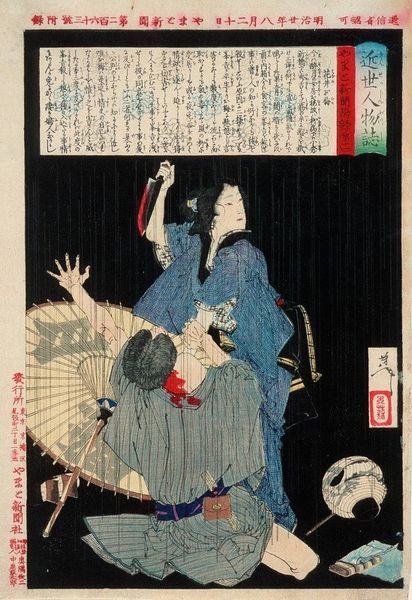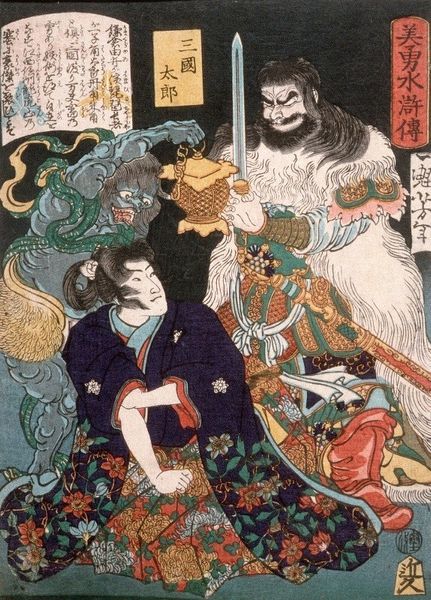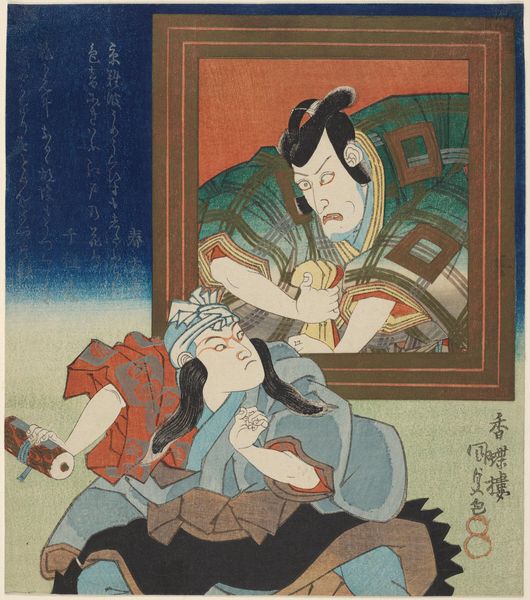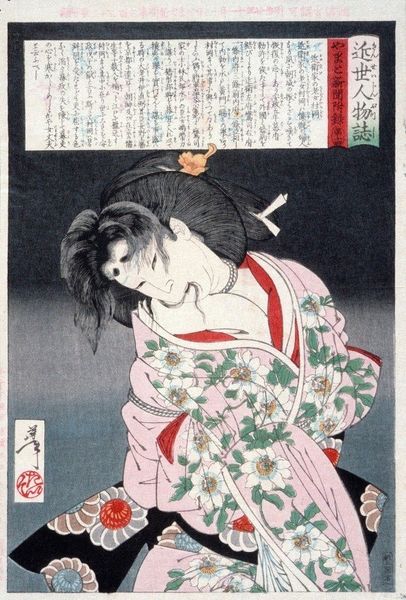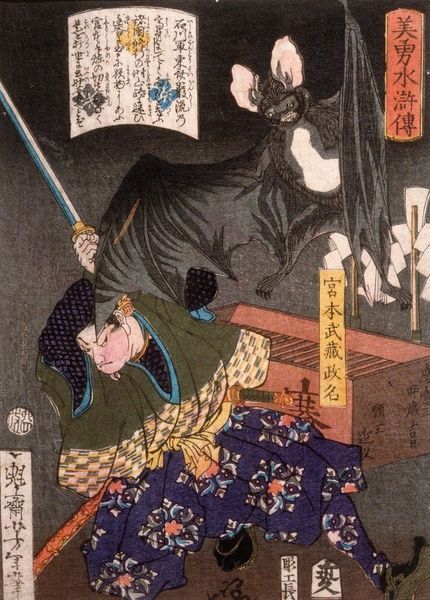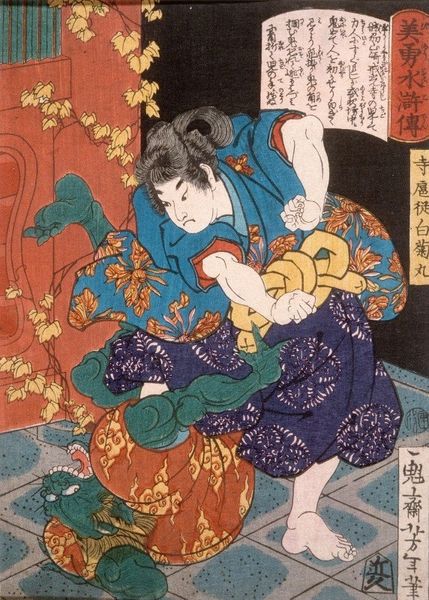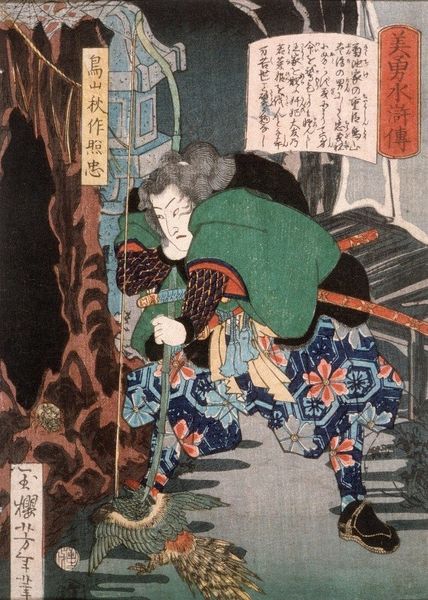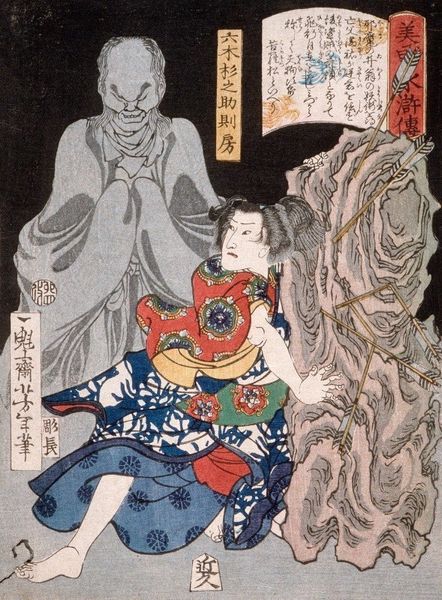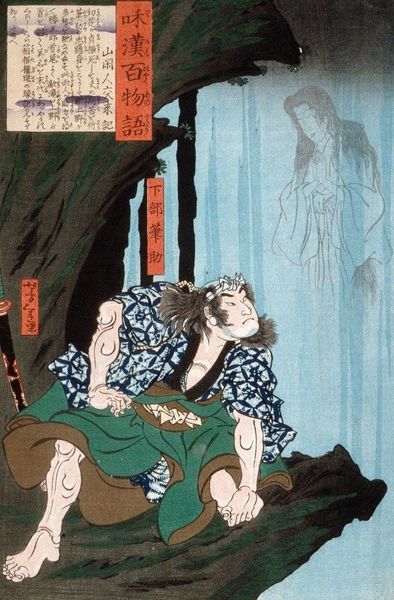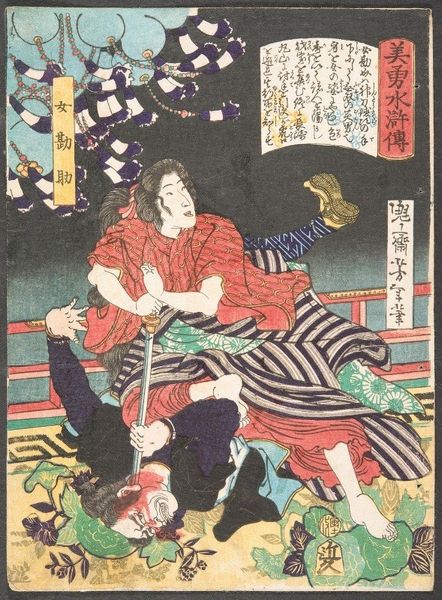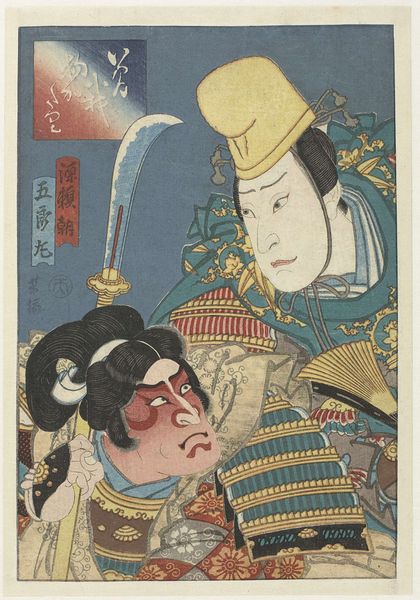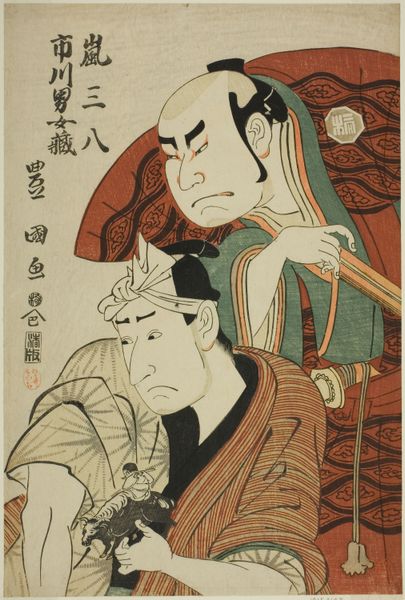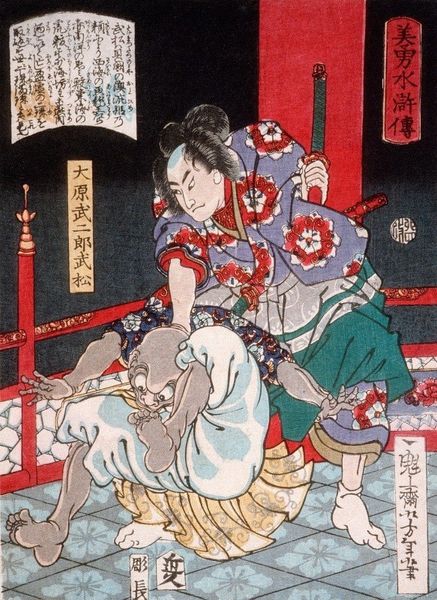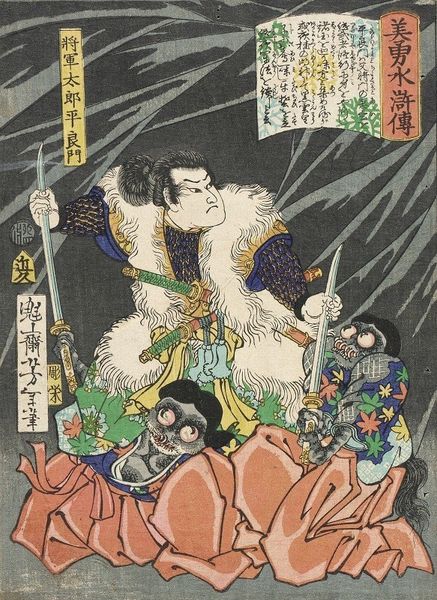
print, woodblock-print
#
narrative-art
# print
#
asian-art
#
ukiyo-e
#
figuration
#
woodblock-print
#
line
#
history-painting
Copyright: Public Domain: Artvee
Curator: I find myself utterly captivated by Yoshitoshi's woodblock print, dating from 1866, entitled "Takagi Umanosuke and the Ghost of a Woman." Editor: Intensely unnerving. The looming visage of the ghost alone commands immediate attention, eclipsing nearly everything else in the frame through sheer scale. There's an immediate sense of tension, almost palpable. Curator: The tension is expertly wrought through composition, line, and color. Consider the intricate linework delineating the ghost's hair, juxtaposed against the relative simplicity of Takagi's figure. The chromatic scheme, predominantly muted, explodes into livid tones in the ghastly face. Editor: Agreed. We need to think about the history embedded in those visual choices too. Yoshitoshi produced this work at a crucial turning point. He straddled the transition of Japanese society from the feudal Edo period to a modern state and he was acutely aware of the changing appetite in Japan for sensationalistic and theatrical works. Curator: Note how the traditional Ukiyo-e method is heightened. He employs dramatic intensity rather than decorative flourish. It reflects not only his technical skill with the woodblock, but it speaks of innovation, the start of a break with a fading art world. Editor: Precisely. Ukiyo-e was increasingly aimed at a diverse public—a popular culture form reflecting anxieties but also asserting traditional stories and morals in the face of modernisation. The artist’s deliberate use of unsettling themes served both a cultural purpose and commercial imperative, mirroring broader anxieties of the time. The depiction of the ghost is more than simple scary imagery, the cultural connotations tap into the deeper currents running through Meiji-era society. Curator: Yes! By drawing our eye directly to the monstrous form with its graphic detail, he directs a psychological space beyond mere historical record or social context. We feel the weight, the very real burden, that these hauntings inflict. Editor: These narratives served to highlight the virtue of figures like Takagi who were examples of fortitude in the face of moral or physical threat. That virtue made them popular subjects but, yes, also, such images played a subtle role in managing societal stress. A brilliant commingling of art and history.
Comments
No comments
Be the first to comment and join the conversation on the ultimate creative platform.
